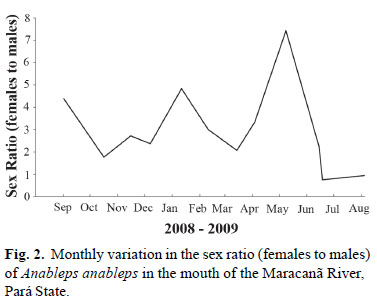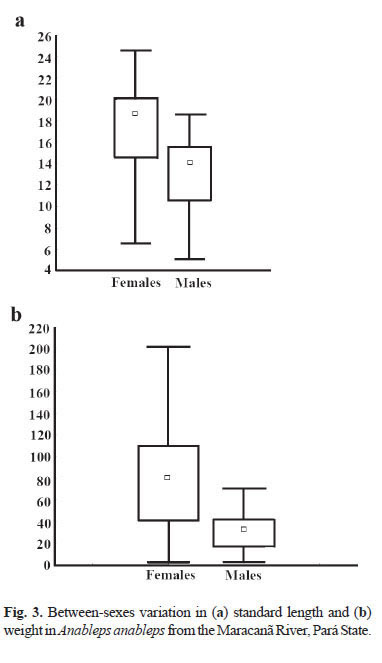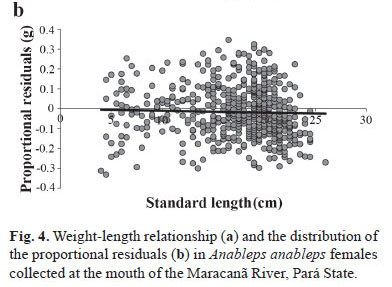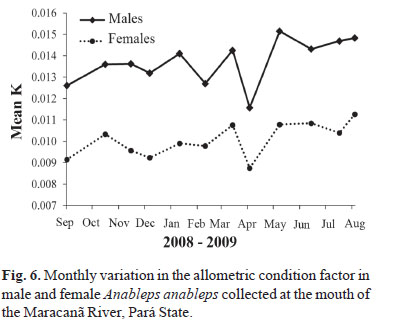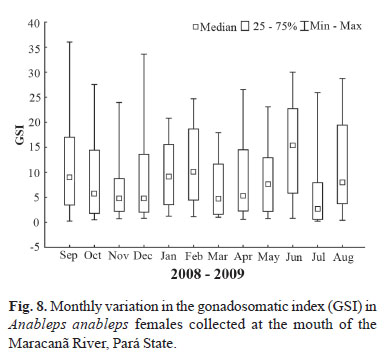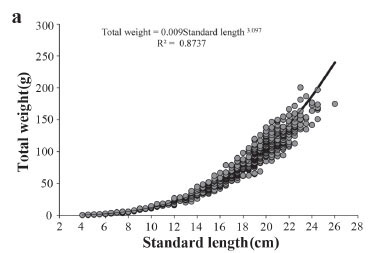The present study analyzed the length-weight relationship and some aspects of the reproductive biology of Anableps anableps from the mouth of the Maracanã River, in the Brazilian state of Pará. The specimens were collected using two 30 m-long gillnets with 15 and 20 mm mesh size, as well as a 1 m-diameter hand net with a 10 mm mesh. A total of 865 specimens were collected, from which an adult sex ratio of 2.12 females per male was recorded (χ² = 13.07; p<0.05). Females presented positively allometric growth, whereas males were negatively allometric. In the additional analyses, the gonads of 371 female specimens were observed microscopically. Gonadal development was classified in three stages: immature (5.0%), maturing (12.0%), and mature (83.0%). Embryonic development was classified in five phases, according to the size of the embryo and the vitelline sac. Mean fecundity was 12 eggs/embryos per female (range: 1-37 eggs/embryos). A significant relationship was recorded between the standard length of females and ovaries weight (R² = 0.257; p < 0.001), and the number of embryos carried (R² = 0.573; p < 0.001). Mean body length of females at initial sexual maturation (L50) was estimated at 11.7 cm. The species reproduced throughout the year.
"Four-eyed" fish; Reproduction; Viviparity


